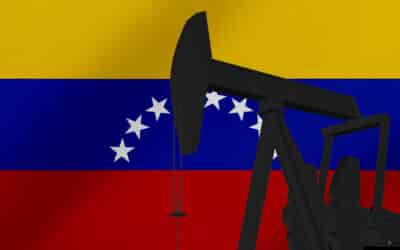The Russian rationale behind invading Ukraine closely resembles the reasoning behind the Soviet incursion into Afghanistan in 1979. Both then and now, many in the West read an unprovoked expansionary move into the Kremlin’s actions. That view, in both instances, is wrong. Putin’s reasoning behind invading Ukraine, like the Soviet Politburo’s decision to invade Afghanistan more than 40 years ago, is borne out of desperation rather than megalomania.
The Last Drop Tipping the Scales
On Christmas Eve 1979, the USSR invaded Afghanistan. In the next decade, the Soviets became bogged down in an unwinnable war against Afghan and Arab mujahideen, who were backed by the Pakistanis, Saudis, Brits and Americans. Not long after the Soviets finally withdrew all forces in 1989, the communist empire collapsed.
This, of course, is well-known. What very few know, however, is that the Politburo’s decision to invade Afghanistan was made on the very same day—probably in the immediate wake of—NATO’s Double-Track Decision. In the early afternoon of December 12, 1979, the then-14 member states of the military alliance decided to introduce a new generation of thermonuclear weapons into Western Europe. According to the Russian historian Aleksandr Lyakhovskiy, that NATO decision was “the last drop tipping the scales” in favor of the Kremlin’s invasion decision.
Why? Throughout much of 1979, the Soviets had remained hesitant to launch a military intervention in Afghanistan, where a country-wide rebellion was threatening the survival of the Soviet-aligned Leninist regime of Hafizullah Amin, in part because they did not want to give the American Senate any grounds not to ratify the SALT II arms control agreement signed in June.
That restraint started to go out the window as the chances of SALT II ratification and Soviet efforts to derail the Double-Track Decision were both becoming increasingly slim in the fall. On 6 December, the decision was made to depose Amin, who was no longer considered reliable since the Soviets feared that he was moving closer to the West. In the next week, however, the Politburo kept wavering between two contingency plans for the operation: either a coup by opposition figures backed by a clandestine “Muslim” Soviet battalion dressed up in Afghan uniforms, or an overt full-scale invasion by the Red Army.
Although the political leadership was starting to shift to the second option, Marshal Nikolay Ogarkov (the highest ranked officer in the army) and General Vasily Zaplatin (the highest ranked Soviet officer in Afghanistan) offered heroic resistance, arguing—correctly, as both the Soviet and U.S. Army would eventually find out—that no amount of military force would break the Afghan tradition of resisting foreign occupiers.
The NATO decision to deploy technologically advanced Pershing II and Tomahawk cruise missiles in Europe, which would soon be able to hit the Western USSR faster and with less chance of being intercepted, finally pushed the Politburo over the edge—as a handwritten note from the Russian archives, dated December 12, 1979, has revealed. The belief in Moscow, according to Lyakhovskiy, was that, now, “there was nothing to lose.”
The Evil Empire
Like now, the West was rightfully outraged at Moscow. That did not mean, however, that the rationale behind the invasion was clearly understood. Ever since the U.S. retreat from Vietnam, Cold War hawks had been screaming from the rooftops that the Kremlin was getting ready to expand its “evil empire” in pursuit of global domination. Some even claimed that Moscow initiated a military buildup in order to launch a nuclear first strike. After the Soviets entered Afghanistan, the hawks felt vindicated.
What the U.S. foreign policy establishment did not understand—or rather was not telling the public—is that the move was borne more out of desperation instead than expansionism. In reality, the USSR was a decaying world power in the 1970s. After the Cold War, it was revealed that the Soviets—unlike the U.S.—never seriously considered a first strike. In fact, they were paranoid of the first use of nuclear weapons by the U.S. True, there was a temporary Soviet military buildup in the 1970s within the confines allowed by the SALT Treaty, but the modernization of Soviet nuclear forces was mainly aimed at catching up with the West.
Decolonization in Africa and Asia, moreover, had not yielded the hoped-for enlargement of the Soviet sphere of influence, and Soviet influence was rapidly waning in the Middle East too. Yet, contrary to frequent Western claims, Moscow acted with restrained in much of the world. It only used brute force to keep its proxy regimes in check within its narrow sphere of influence, such as in Hungary in 1956, Czechoslovakia in 1967, and Afghanistan in 1979.
Half a century later, a similar situation has emerged. In the 1990s, the Soviet empire fell apart and Russia’s economy went downhill. While ruling with a heavy hand ever since he came to power in 2000, Putin managed to stabilize the country politically and economically. Yet, in spite of numerous empty promises from Western leaders (recently once again confirmed by archival documents), NATO kept on expanding eastward. In fact, today all of Moscow’s former Warsaw Pact allies as well as three former Soviet republics (the Baltic countries) are part of NATO. Since 2008, furthermore, there is a written agreement among the Allies that Ukraine and Georgia, two additional former Soviet republics, “will become members of NATO in the future.”
In short, like in the 1970s, Russia’s sphere of influence is in decline. Moscow has made it clear long ago, however, that Ukraine is a red line. From its perspective, the West in 2014 enabled a coup in Kiev, which unseated the democratically elected Russia-leaning president in favor for an anti-Russian regime. Indeed, Victoria Nuland, then and now a State Department official, is on record helping to “midwife” the regime change. In fact, moral support from Vice President Joe Biden to the revolutionaries was one trick out of her toolbox to “glue this thing” together. It is in reaction to this change of power that Putin annexed Crimea, which has hosted an important Russian military basis for nearly two and a half centuries.
Two self-proclaimed republics in the Donbas, where a procrastinated war has been ranging since 2014, officially requested Putin to annex Luhansk and Donetsk as well. At the time, the Russian president declined this request. Now, urged on by the Duma, Putin has changed his mind and effectively recognized the break-away regions as independent. Following that decision, Russian “peacekeeping” troops entered Eastern Ukraine.
Putin’s Conspiracy Theory
Yet, Putin has not stopped there. For the first time since 1979, Russia has launched a blatant large-scale invasion of another country. The Russian president could have limited the incursion to the quasi-annexed territories in Eastern Ukraine, however—but he did not. It is for journalists and historians to find out what finally pushed the scales in favor of a complete invasion this time.
For now, however, the example of Afghanistan might provide some hints. In 1979 the Kremlin opted for an overt invasion instead of a covert operation in part because it felt that there was little reason to keep trying to appease the West. One wonders if things might have turned out differently had the U.S. Senate ratified SALT II in the summer of that year? Or if NATO had decided to give arms control a chance before making a firm decision on the deployment of the new thermonuclear missiles, as indeed large segments of the West-European public preferred? Or if the West had not dismissed Moscow’s repeated proposals for a mutual “no first use” declaration on nuclear weapons as empty propaganda?
The decline of détente in the second half of the 1970s is in many ways similar to the state of U.S.-Russian relations today. Since 2016, Putin is constantly demonized in Western media as a power-hungry dictator with tentacles all over the world—up until the White House. That dehumanization made it possible to ignore the security concerns that Putin has raised in the past several years.
In addition to the ever eastward expansion of NATO, Putin has for years warned against the eastward movement of dual-capable missiles. In a reply to the most recent Russian security proposals, leaked to the Spanish newspaper El Pais, the U.S. has finally declared itself willing to provide a “transparency mechanism to confirm the absence of Tomahawk cruise missiles” at U.S. antiballistic missile bases in Romania and Poland—as well as guarantees that it will not install offensive nuclear-capable missiles in Ukraine.
Yet, as The New York Times reported on Wednesday, Putin is nonetheless alleging that the U.S. and Ukraine are secretly building nuclear weapons in Ukraine as a justification for the invasion. The Times rightfully calls this a baseless “conspiracy theory.” Indeed, Putin’s claim that “we cannot but react to this real danger” of Ukraine “acquiring weapons of mass destruction” sounds awfully similar to the George W. Bush administration’s justification for invading Iraq in 2003.
Yet, if only there was nothing further to be said about this, we could easily dismiss this “conspiracy theory” as WMD 2.0 war propaganda. Yet, it is undeniable that the West has contributed to Putin’s sense of strategic vulnerability, which cannot as easily be dismissed as a transparent trick to justify Russia’s invasion of Ukraine. Indeed, it is not Russia but the U.S. that has left three landmark arms control treaties in the past two decades. Bush left the ABM Treaty in 2000, which made the construction of the ABM sites in Romania and Poland possible. Trump left both the Open Skies and INF Treaties, and he almost led the Obama-era New START Treaty die. The latter, which was extended during Biden’s first month in office, is the last remaining arms control agreement between the two former Cold War opponents.
A Giant with Feet of Clay
The situation we find ourselves in today was predicted by George Kennan in 1998 during an interview with the Times’ Thomas L. Friedman. By expanding “all the way to Russia’s border,” the founding father of the U.S.’s communist containment policy warned, NATO would “trigger a new cold war.” At some point, the Russians would react, which in turn would be used as proof of Russian irredentism. What bothered Kennan the most, was the fact that “our differences in the Cold War were with the Soviet communist regime,” not with the patriotic democrats who “mounted the greatest bloodless revolution in history.”
Also in 1998, another influential Cold War-era foreign policy maker, Zbigniew Brzezinski, gave an interview to the French newspaper Le Nouvel Observateur. In it, Jimmy Carter’s national security advisor admitted that the U.S. president had signed off on covert aid to the mujahideen in July 1979—that is, months before the invasion and shortly after the signing of SALT II. During the interview, Brzezinski infamously dismissed as “nonsense” the allegation that “giving to the USSR its Vietnam War” could have a blowback effect in the form of rising extremism among “some agitated Muslims.”
A couple of months after Brzezinski’s remarks, Al-Qaeda blew up two U.S. Embassies in East-Africa, killing more than 200 people. Three years later, the Twin Towers fell. The invasion of Afghanistan and Iraq—as well as military operations in a litany of countries under the War on Terrorism label—soon followed. Eventually, the U.S. again fell in a Vietnam-style trap and for almost two decades became bogged down in its own Afghan quagmire.
Now that U.S. troops have finally returned home—at least from Afghanistan—it would serve the West well to think twice about how to react to the current situation. What we need to realize, is that Russia is a giant with feet of clay. Just like in the 1970s and 1980s, it is a declining world power. As its influence on the world stage keeps decreasing, there is no need to provoke the giant into taking desperate measures. We should not forget, after all, that it has enough nukes to bomb the West back to the stone age.































